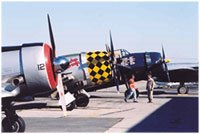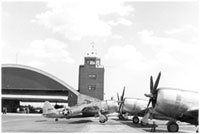
My son and I departed JFK on 17 July and had a wonderful flight during the mid-summer night with daylight still present in the north all the way over the North Atlantic. We made landfall near Shannon, Ireland and arrived earlier in Frankfurt. After a 2-day rest at relatives we drove across the Rhein, just about were Patton crossed it near Oppenheim in March 1945. Our journey went through the famous Pfaelzer vine country and we passed Kaiserslautern and a few minutes later the huge U.S. Air Base at Ramstein with the nearby Landstuhl military hospital, the largest hospital outside the U.S. Soon we crossed into Luxembourg and arrived in L.-City. At its suburb Hamm our target was the American Military Cemetery. We found it to be a wonderfully created memorial with chapels, monuments and huge battle maps in ceramic mosaic. Sadly the main part are the many grave sites with white marble crosses and Star of David, all fallen heroes from the big battle of the Ardennes Offensive. Patton’s site is now up front between two flag poles and it seems he speaks to his troops. We left, I thinking back to 1945 what might it have been like in that area. One month later the 1st Army occupied our city east.
Our next visit was at the German Military Cemetery only about a mile away in Sandweiler. Soon we continued our trip across the next border into Belgium and arrived late afternoon in Bastogne. There we were expected by our friend and Tour Guide Henri who took us the next day into the former battle fields of the Battle of the Bulge. Surprisingly we viewed the fox holes of ”Easy Company”, now slightly grown over with moss in the dense Ardennes Forest. We also joined a group of 50 American students on a 21-day tour where Henri had a tour arranged. The bus took us up to Mardasson Hill, overlooking Bastogne with its huge monument. Down below inside the rocks we entered the Crypt and listened to Henri’s stories. The walls are decorated murals in colored mosaic, one for each faith. Henri asked me also to speak to the students about my experiences during WWII in Germany, located nearby where the Russian Armies were met on 20 April 1945. The entire area is filled with tanks, American and German, reminding all today of a terrible battle in December 1944. The local citizens will never forget the siege of the town when the 101st paratroopers defended the town against German takeover. We also visited the former convent where the 501PIR set up their Command Post during the siege. The last nun died about 2 years ago at age 100.
Soon we departed again and went back to Germany and on to Austria far east to Vienna. In this wonderful city we walked most of the attractions and on our way back to Germany we stopped in nearby Krems along the Danube and went up through the vineyards into its suburb Gneixendorf where STALAG 17B was located from 1938 to 1945. It has now become an aerodrome for small airplanes and parachute jumping. At the corner into the airfield some stone monuments remember of this famous prison camp. Then we went on to Linz along the Danube and back into Germany.
This completed a 2000-mile car trip, enjoying the scenery, history and lucrative food.


Nuk ka komente:
Posto një koment